At the Economic Forum with the theme "State-owned enterprises: Improving competitiveness and leading role" organized by the Voice of Vietnam Electronic Newspaper, Voice of Vietnam (VOV) on the morning of November 20, Mr. Nguyen Tat Thai, Deputy Director of the Department of Forecasting, Statistics - Monetary and Financial Stabilization (State Bank of Vietnam), commented: After 40 years, Vietnam's economy's GDP grew from 4.5 billion USD in 1986 to 476.3 billion USD in 2024 and is expected to reach over 510 billion USD in 2025. Notably, state-owned enterprises (SOEs) are the core force contributing more than 29% of GDP.
According to Mr. Thai, in the Government 's report, by the end of 2024, Vietnam will have 847 enterprises with State capital contributions. In particular, the report on the financial situation and production and business performance in 2024 of 819 enterprises (including 677 SOEs and 142 enterprises with State capital contributions) shows that total assets reached 4,336 trillion VND, an increase of 8% compared to the beginning of 2024. Total revenue reached 2,931 trillion VND, an increase of 9% compared to 2023.
Pre-tax profit reaches VND256 trillion, up 18% compared to 2023. The average pre-tax profit/equity ratio is 13% (12% in 2023); The average pre-tax profit/total assets ratio is 6%.

State-owned enterprises are the core force contributing more than 29% of GDP.
In the first 6 months of 2025, State-owned corporations and groups also achieved positive business results. Total consolidated revenue is estimated at 1,070 trillion VND, pre-tax profit is 82.1 trillion VND, and State budget contribution is 102.7 trillion VND.
Many projects have been cleared, contributing positively to economic growth, macroeconomic stability, ensuring major balances of the economy such as: Long Thanh International Airport Project Phase 1; Lot B - O Mon gas - power project chain; Nhon Trach 3 and 4 Power Plants; Thi Vai LNG warehouse expansion; Dung Quat Oil Refinery expansion; Long Phu 1 power projects...
For SOEs in the banking sector managed by the State Bank, they continue to play a key role in the Vietnamese financial system, providing credit capital and payment intermediaries for the economy, contributing to stabilizing the macro economy and promoting sustainable economic development.
Why is the contribution of state-owned enterprises to GDP declining?
Regarding the contribution of SOEs to GDP growth, Dr. Ha Huy Ngoc - Institute of Vietnam and World Economics - said that in 2005, this sector accounted for 37.6% of GDP, but by 2023, this figure had dropped to 21.03%.
The sharpest decline occurred in the 2009-2010 period, when it fell from 34.7% to 24.18%. Meanwhile, the non-state economic sector and the foreign-invested sector (FDI) tended to increase their proportions, accounting for 50.42% and 20.29% of GDP in 2023, respectively, compared to only 15.16% in 2005.
“The main reason for this decline is mainly due to the shrinking of the State economic sector along with the development and expansion of the economy. Implementing the policy of restructuring and equitizing State-owned enterprises, since 2011, the Government has deployed a series of policies to reduce dependence on State-owned enterprises and increase the efficiency of the economy through the private sector,” Dr. Ngoc commented.
According to the report of the Ministry of Planning and Investment (2023), from 2011 to 2023, more than 500 State-owned enterprises were equitized, including large corporations such as Sabeco, Vinamilk and a number of State-owned commercial banks. Equitization helps reduce the financial burden on the State, but at the same time reduces the role of State-owned enterprises in the economy. When State-owned enterprises are downsized or converted into private enterprises after equitization, the value of this sector's contribution to GDP decreases, leading to a corresponding decrease in the GDP proportion of the State sector.
Along with the equitization of state-owned enterprises, the non-state economic sector has developed strongly in the past two decades. Private enterprises have advantages over state-owned enterprises in adapting to the market, improving labor productivity and attracting investment capital, which reduces the role of the state sector in the economy.
In addition, the Government's policy of encouraging startups and supporting small and medium enterprises has significantly increased the number of effectively operating private enterprises.
Not only the private economic sector, the FDI sector is also playing an increasingly larger role in the economy. Vietnam has become an increasingly attractive destination for foreign investors, especially after signing important free trade agreements such as EVFTA, CPTPP and RCEP. As a result, the foreign direct investment (FDI) sector has expanded rapidly, accounting for 20.29% of GDP in 2023, compared to only 15.16% of GDP in 2005.
FDI inflows are mainly concentrated in processing, manufacturing and high-tech industries, helping to increase labor productivity and contribute greatly to economic growth. Meanwhile, the State economic sector mainly operates in traditional areas such as infrastructure construction, energy and public finance, leading to a decrease in proportion compared to the other two sectors.
Despite its declining share in GDP, the growth rate of the State economic sector remains relatively stable, fluctuating between 3 and 6% per year. However, compared to the private sector and the FDI sector, the growth rate of the State economic sector is significantly lower. During the period 2005 - 2023, the average annual growth of the State sector is 4.5%, while the non-State economic sector is 6.5% and the FDI sector is 8 - 10%.
In particular, the COVID-19 pandemic has had a negative impact on the entire Vietnamese economy, including the State economic sector. In the 2020-2021 period, the growth rate of the State sector decreased to 3.97% in 2020 and 4.09% in 2021, significantly lower than the average of previous years.
The main reason is that many state-owned enterprises operating in the transport, tourism and energy sectors were heavily affected by social distancing measures and supply chain disruptions. However, thanks to government support policies and increased public investment, the sector recovered in 2022 with a growth rate of 8.86%.
“In recent years, the growth rate of the State economic sector has slightly recovered. In 2022, the growth rate reached 8.86%, significantly higher than the average of this sector in the previous period. In the future, the role of the State economic sector may continue to narrow in proportion, but still play an important role in strategic areas such as infrastructure, energy and public finance. Reforming and improving the operational efficiency of this sector will be an important factor to ensure the sustainable development of the Vietnamese economy,” Mr. Ngoc commented.
Source: https://vtcnews.vn/dong-gop-to-lon-cua-doanh-nghiep-nha-nuoc-sau-40-nam-doi-moi-ar988423.html








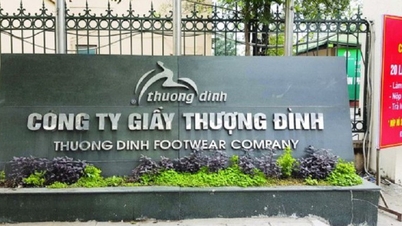



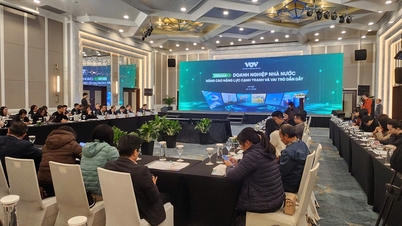



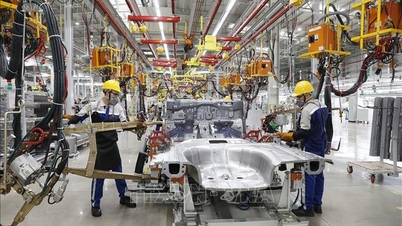






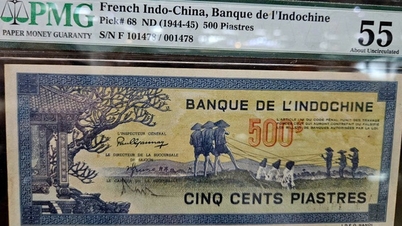

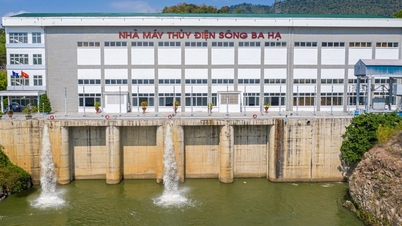






















































































Comment (0)